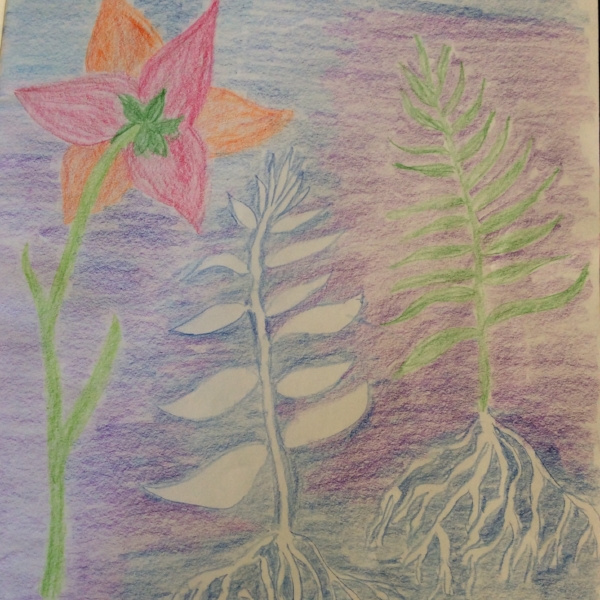We often talk about teaching academics as the "3Rs" -- reading, writing and arithmetic. But what about all of the other important academic subjects taught at Madrona School? The Waldorf methodology offers a classical education, a liberal arts approach that introduces students to a wide variety of subjects throughout their grade school years, in keeping with their developing capacities. How do we teach science, for example?
We really begin in early childhood, laying a solid foundation for academic work. For scientific studies specifically, we simply provide opportunities for our young students to explore in the natural world, doing. They dig, they bake bread and make jam, they climb over logs, they collect pocketfuls of rocks, they soak up the sunshine etc., using all of their senses and fully living into the world. As anyone with a small child knows, they are natural scientists -- curious about their world and eager to explore.
In the early grade school years, we work consciously to instill a sense of wonder in the natural world, nurturing ever increasing capacities for observation. 1st and 2nd graders go on walks, collecting horse chestnuts or pine cones or leaves, depending on the season, incorporating natural materials into classroom projects or math lessons. Or, they may do simple experiments, such as planting seeds and recording what happens. Beginning in 3rd grade, with its practical life curriculum, students have the opportunity for gardening. Our current 3rd and 4th graders are working with the garden at Lowery Farm, and they spend many hours there, tackling jobs, observing changes and recording it all in their gardening journals. In 4th grade, the students have their first specific science block, studying the animal kingdom, and writing an independent report. In 5th grade, a botany block allows for further careful observation and demonstration of the artistic techniques that have been practiced throughout grade school.
In middle school, we continue to teach through a connection to our observable world, and to the universe at large, using students' observation and communication skills in combination with their awakening capacities for abstract thinking. In 6th grade, the students study more science than they have to date, and we offer geology, astronomy and physics -- a close look at our planet and what it is made up of, the study of what surrounds us, and a first taste of a lab science. The Waldorf methodology takes a phenomenological approach to teaching science, which means we offer opportunities for observation of the laws of nature without teaching the theory first. In chemistry and physics blocks, for example, students will watch an experiment performed, take careful notes on what they see (learning the scientific format of procedure, equipment, observation and conclusion), then discuss possible explanations and reach conclusions as a class. Sometimes, after this process, a teacher will elaborate on the relevant theories and scientific laws further, but the hope is that the students can approach the theory themselves. Even when we teach a physiology block, the approach is an experiential one, where they begin with what they can observe or feel about their bodies, before talking about what makes up a particular part of the body.
When a child graduates from 8th grade, they've had a broad introduction to various scientific disciplines, from the natural sciences, to chemistry, to physics and beyond. They can express themselves with clarity and with beauty. And they have honed their observation skills, and practiced finding ways to express observable phenomena, providing a basis for learning and thinking about new subjects as they go on into high school.














